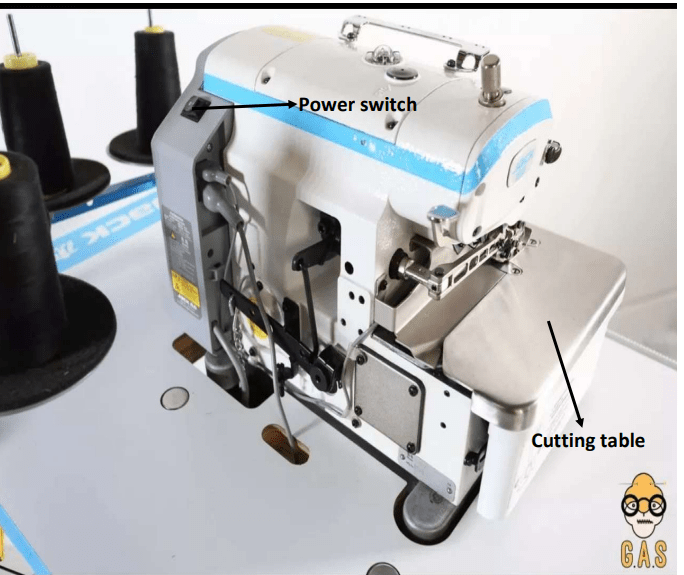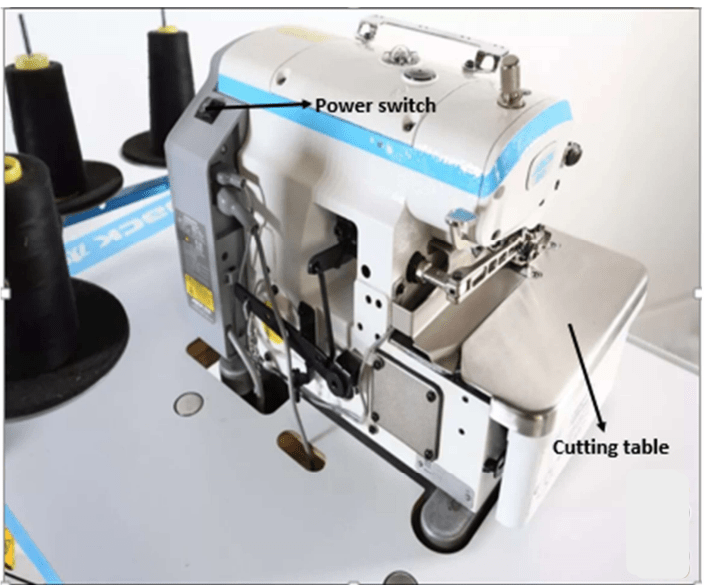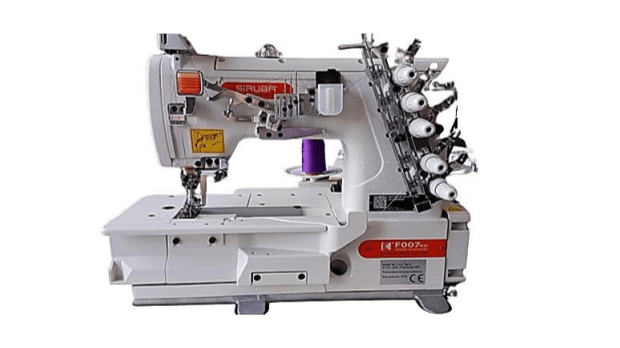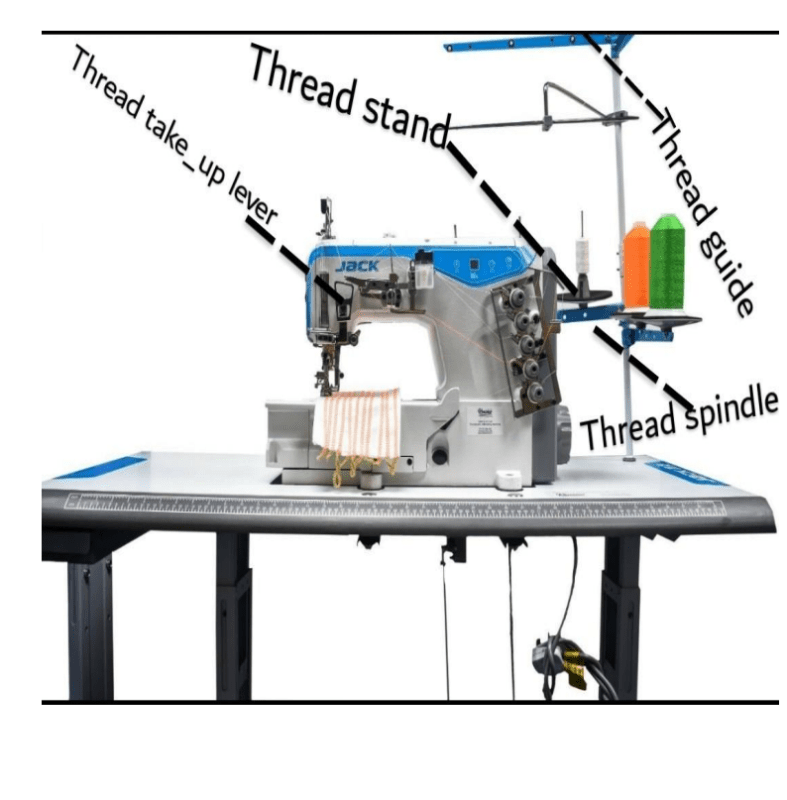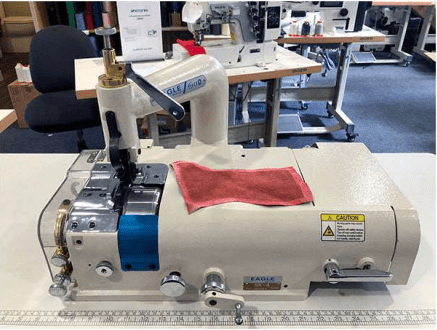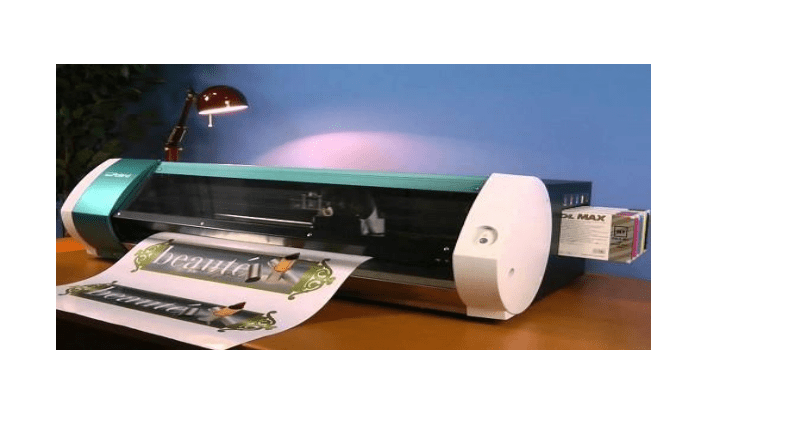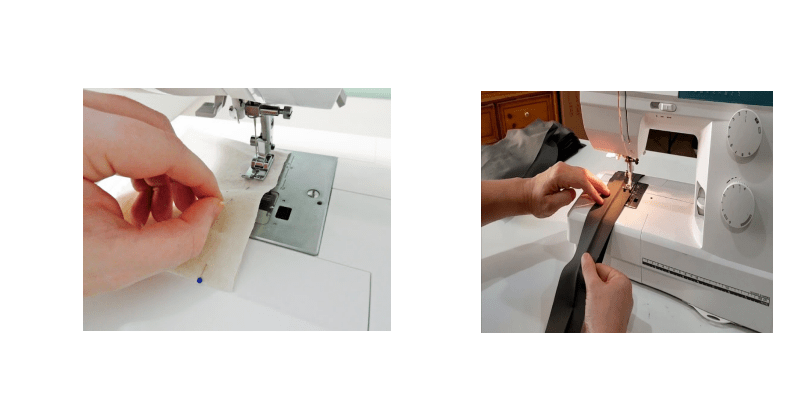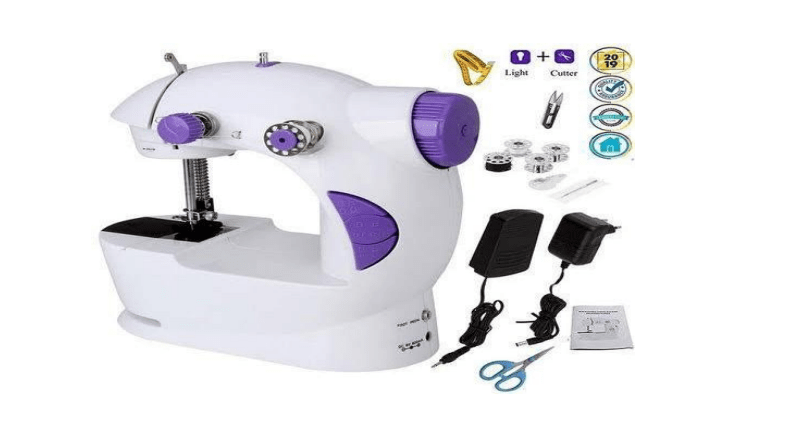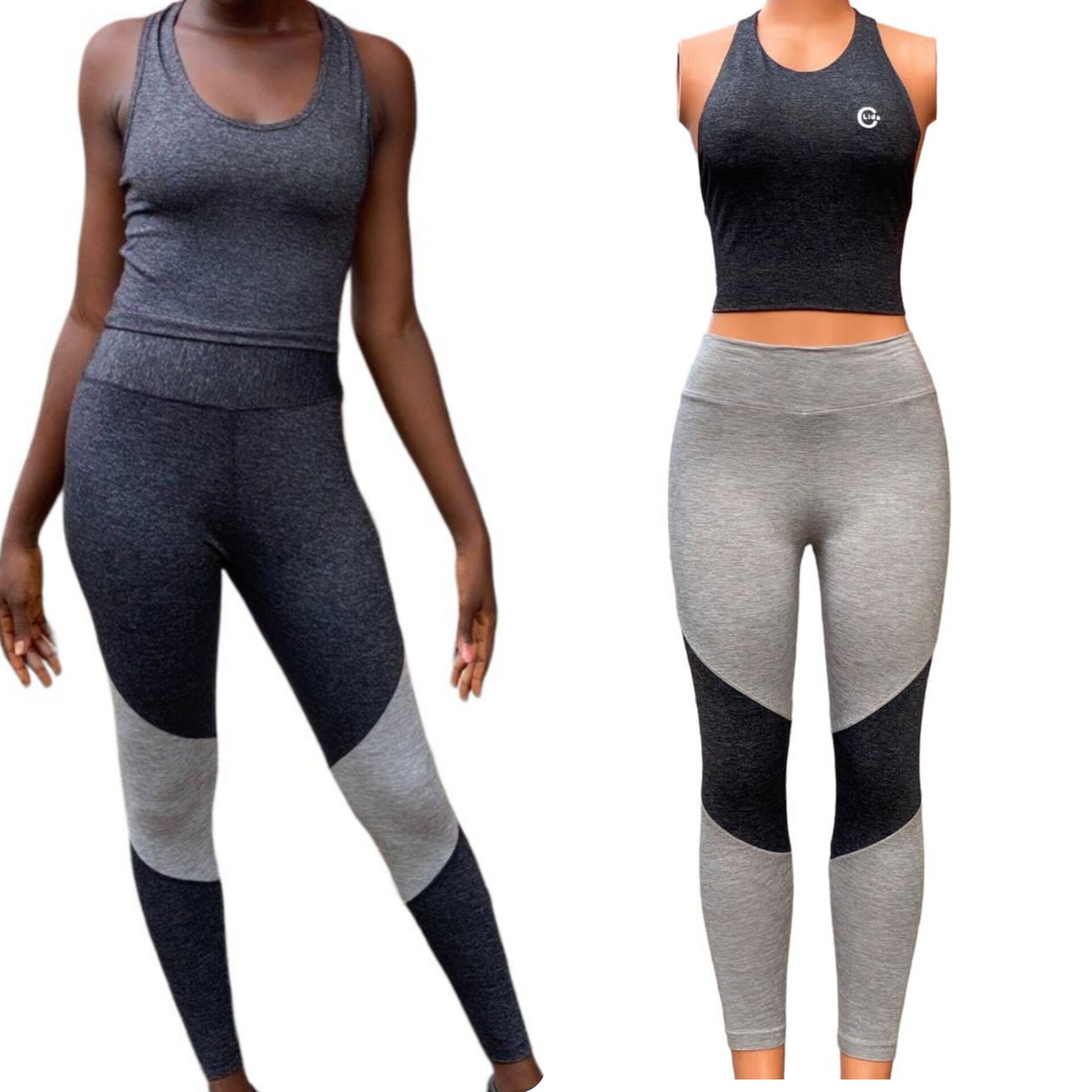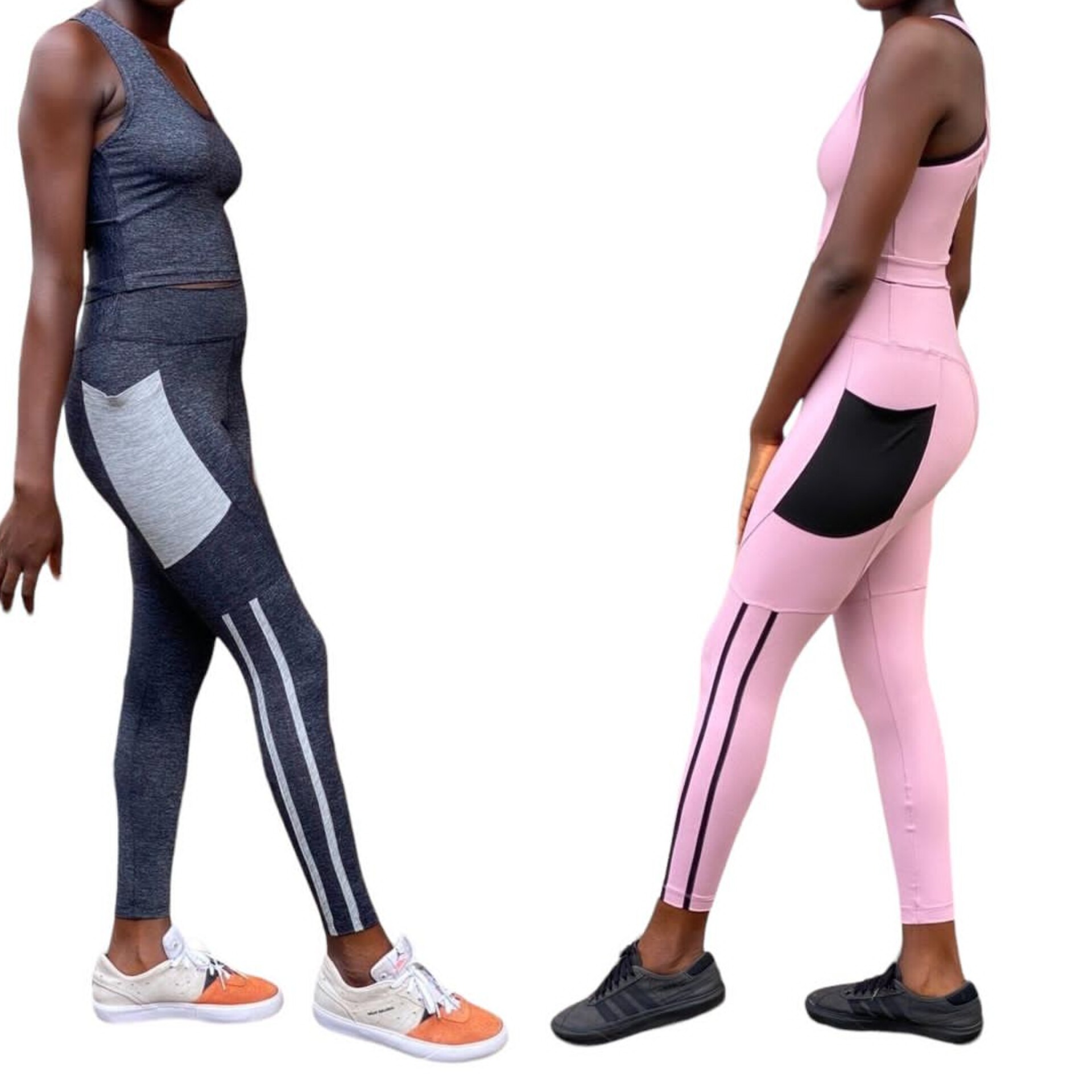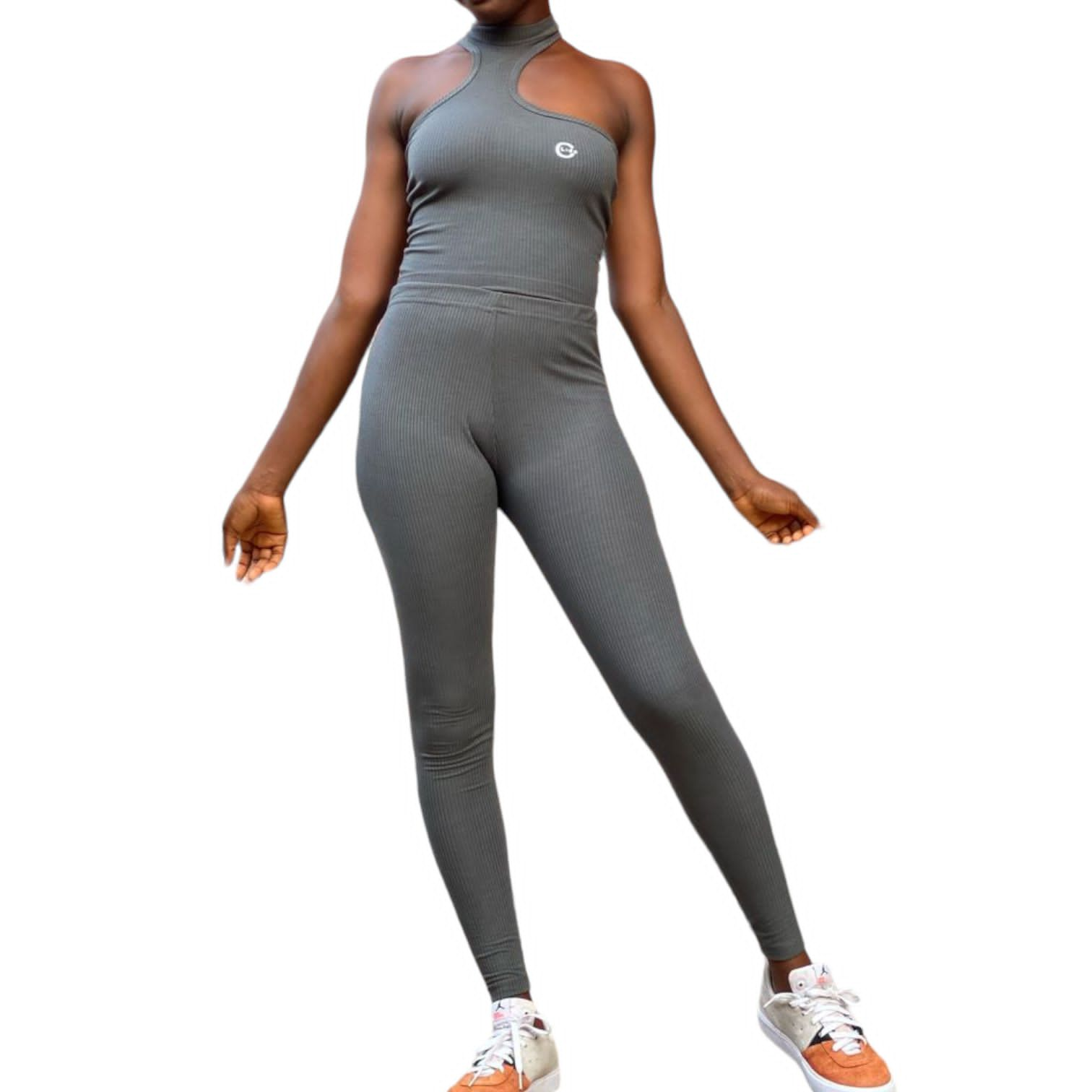30 minute read
Introduction
In the intricate world of sewing, the needle is a
fundamental tool that can significantly impact the quality
of your work.
Understanding the different types of needles and
their specific applications is essential for achieving precise
and professional results, this project focuses on three
types of specialized needles: Tapestry, Microtex, and
Beading needles.
Each of these needles has unique characteristics that
make them suitable for specific fabrics and stitching
techniques.
By exploring their uses, compatibility with various
sewing machines, and maintenance requirements, this
project aims to provide a comprehensive guide for sewing
enthusiasts and professionals alike.
Through detailed analysis and practical insights, we
will uncover how these needles contribute to the art and
efficiency of sewing, ensuring optimal performance and
longevity of both the needles and the sewing machines.
Brief Definition on the Sewing Machine it is Used
Upon
Sewing machines are designed for specific types of
stitching, each requiring particular needles to function
effectively.
This section provides an overview of various sewing
machines and identifies which of the specialized
needles—Tapestry, Microtex, and Beading—are
compatible with each machine.
Understanding the compatibility and specific uses of
these needles enhances the quality of sewing projects
and ensures optimal machine performance.
- 3 Thread Overlock Sewing Machine
- Function: Used to finish the edges of fabric to prevent
fraying, creating a narrow, strong seam suitable for
lightweight to medium fabrics. - Compatible Needle: This machine typically uses
standard overlock needles, tapestry, Microtex, and
Beading needles are not typically compatible with this
machine.
- 4 Thread Overlock Sewing Machine
- Function: Adds an additional thread for increased
durability and flexibility in seams, ideal for stretch and
knit fabrics.
• Compatible Needle: Uses robust overlock needles.
Tapestry, Microtex, and Beading needles are not usually
suitable for this machine.
- 5 Thread Overlock Sewing Machine
- Function: Combines an overlock stitch and a chain
stitch for a secure and robust seam, suitable for heavy
fabrics and multiple layers. - Compatible Needle: Heavy-duty overlock needles are
required. Tapestry, Microtex, and Beading needles are
not compatible with this machine.
- Lock Stitch Sewing Machine
- Function: The most common type of sewing machine,
used for straight stitches on a variety of fabrics.
Compatible Needle:
• Microtex Needles: Ideal for this machine, especially for
sewing fine or tightly woven fabrics due to their sharp,
slender point, they provide precise and clean stitches.
- Interlocking Sewing Machine
- Function: Used for complex stitching patterns and
decorative stitches, often found in industrial
applications.
Compatible Needle:
- Microtex Needles: Suitable for precise stitching on fine
fabrics, making them a good match for the intricate
stitching patterns produced by this machine.
- Cover Stitch Sewing Machine
- Function: Creates professional-looking hems and
topstitching on knit fabrics, frequently used in garment
construction.
• Compatible Needle: Uses specific cover stitch needles.
Tapestry, Microtex, and Beading needles are not typically
used with this machine.
- Double Needle Sewing Machine
- Function: Utilizes two needles to create parallel rows
of stitching, commonly for hems and decorative finishes. - Compatible Needle: Twin needles are used for this
machine. Tapestry, Microtex, or Beading needles are not
suitable.
- Chain Stitch Sewing Machine
- Function: Produces a flexible, chain-like stitch, ideal
for seams that need to stretch, commonly used for knit
fabrics. - Compatible Needle: Chain stitch needles are used.
Tapestry, Microtex, and Beading needles are not
compatible.
- Domestic Embroidery Machine
- Function: Designed for creating intricate embroidery
patterns on a variety of fabrics.
Compatible Needle
- Microtex Needles: Suitable for detailed and precise
embroidery work, especially on fine fabrics. - Beading Needles: Can be used if the machine supports
beading functions to add beads and sequins to
embroidery projects. - Tapestry Needles: Generally used for hand embroidery,
but some specialized embroidery machines may
support their use. By matching the appropriate needle to the
corresponding sewing machine, you ensure smooth
• operation, high-quality stitching, and extended machine
and needle life.
Each needle type is designed to complement the
specific functions and capabilities of the sewing machine
it is used with, optimizing your sewing projects.
A Labelled Diagram with Explanation on the
Labelled Parts of Each Needle
To understand the structure and function of sewing
needles, it’s essential to examine their parts in which each
part of a needle plays a crucial role in its performance.
Below is a detailed explanation of the key parts of
Tapestry, Microtex, and Beading needles, accompanied
by a labelled diagram
Diagram:
Sewing Needle Diagram

- Shank
- Description: The upper part of the needle that is
inserted into the sewing machine, it is thicker than the rest
of the needle. - Function: Provides stability and ensures the needle is
properly aligned in the machine, for hand needles, this is
the part you hold while sewing.
- Eye
- Description: The hole near the pointed end of the
needle through which the thread passes. - Function: Holds the thread as the needle moves through
the fabric, in which the size and shape of the eye vary
depending on the needle type.
- Point
- Description: The tip of the needle that penetrates the
fabric. - Function: Designed to suit specific fabrics and stitching
techniques, its point can be sharp, blunt, or ballpoint.
- Groove
- Description: A channel on the front of the needle running
from the eye to the point. - Function: Protects the thread as it moves through the
fabric, reducing friction and preventing thread breakage.
- Scarf
- Description: An indentation above the eye on the
back side of the needle. - Function: Allows the bobbin hook to catch the thread
loop formed during stitching, ensuring a smooth
stitch formation.
Detailed Descriptions for Each Needle Type
1. Tapestry Needle

- Shank: Thick and robust, providing stability during hand
embroidery. - Shaft: Medium to thick, suitable for handling heavier
threads and yarns.
Eye: Large, accommodating thicker threads and yarns
easily.
- Point: Blunt, designed to pass through fabric without
splitting it, ideal for counted cross-stitch and needlepoint. - Groove: Standard, suitable for guiding thicker threads.
- Scarf: Minimal, as it is primarily a hand needle.
2. Microtex Needle

- Shank: Standard size for machine use.
- Shaft: Thin, allowing for precision in stitching fine
fabrics. - Eye: Small, accommodating finer threads.
- Point: Very sharp and slender, designed to pierce
through tightly woven fabrics cleanly. - Groove: Narrow, ensuring precise thread guidance.
- Scarf: Pronounced, aiding in smooth stitch formation by
the machine’s bobbin hook.
3. Beading Needle
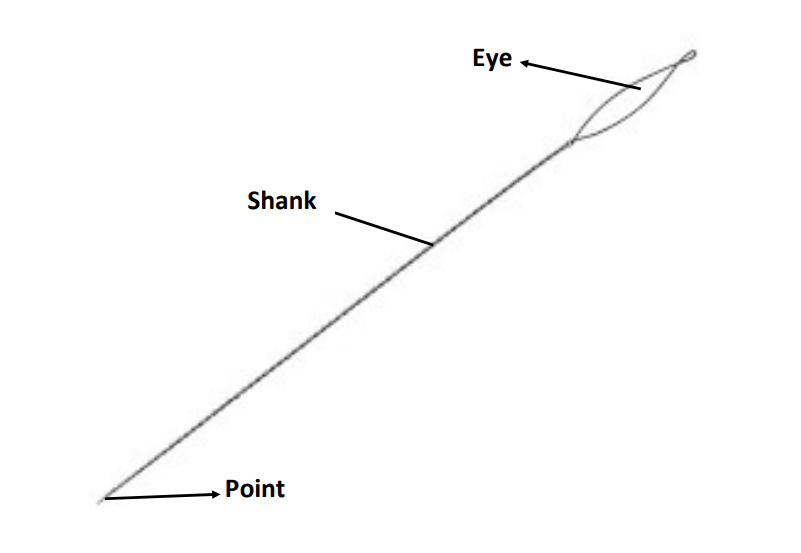
- Shank: Thin and long, designed for both hand and
machine use. - Shaft: Very thin, flexible, and long to accommodate
multiple beads. - Eye: Small and narrow, suitable for fine threads that
pass through tiny beads. - Point: Sharp, allowing easy passage through fabric and
beads. - Groove: Fine, suitable for delicate threads.
- Scarf: Slight, if used in a machine, aiding in smooth
stitching.
Each Needle Specific Uses
Each type of needle—Tapestry, Microtex, and
Beading—serves unique purposes in sewing and embroidery.
Their specific designs cater to different fabrics,
threads, and stitching techniques, ensuring optimal
performance for various projects.
- Tapestry Needles
Uses:
Needlepoint: Tapestry needles are perfect for
needlepoint, where the blunt point prevents the splitting
of canvas threads, ensuring even stitches.
- Cross-Stitch: The large eye and blunt tip make tapestry
needles ideal for cross-stitch, as they glide through
prepunched holes in Aida fabric without damaging the
weave. - Embroidery on Heavy Fabrics: These needles work well
with thicker threads and yarns, suitable for embroidery on
heavy or loosely woven fabrics such as burlap.
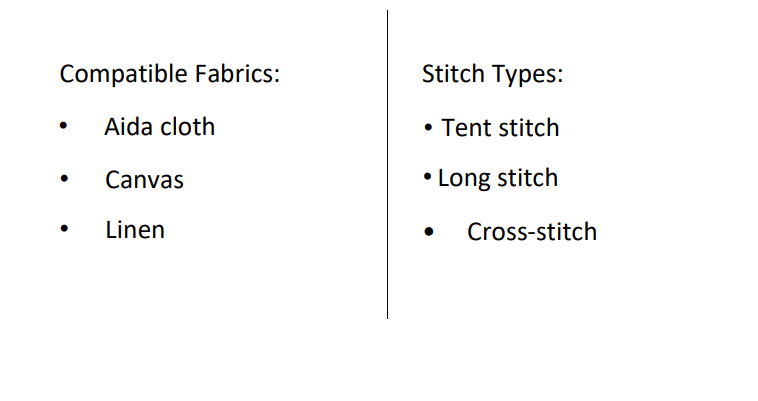
- Microtex Needles
Uses:
- Precision Sewing: Microtex needles are ideal for
detailed, precise sewing on fine or tightly woven fabrics,
where a regular needle might cause puckering or
skipped stitches. - Silk and Microfiber: The sharp, slender point allows for
smooth sewing on delicate fabrics like silk and
microfiber without causing snags or runs. - Topstitching: Excellent for topstitching fine fabrics where
precise, clean lines are crucial.
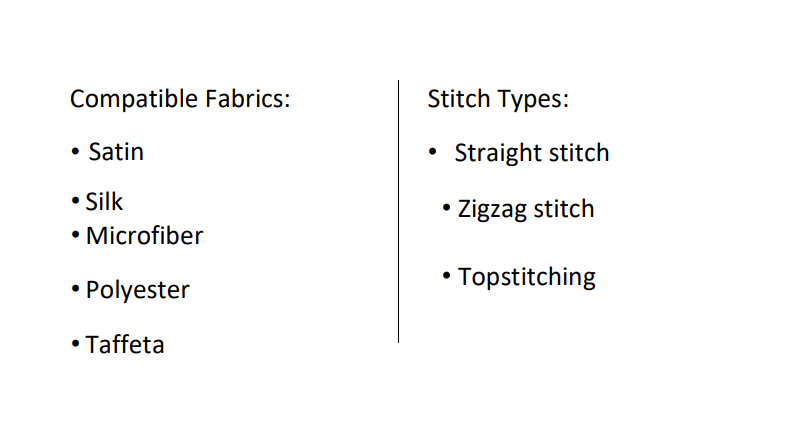
- Beading Needles
Uses:
- Bead Embroidery: Beading needles are designed to
easily thread through small beads, making them
perfect for intricate bead embroidery on fabrics. - Attaching Sequins: They are used to attach sequins and
other small embellishments to fabric, often in detailed
patterns or decorative designs. - Hand Beading: Ideal for hand sewing beads onto fabric
for embellishments, adding intricate details to
garments, accessories, and home decor items.
Compatible Fabrics:
• Tulle
- Lightweight fabrics
- Organza
- Sheer fabrics
Stitch Types: - Bead stitch
- Sequin stitch
- Couching stitch
Various Sizes of the Needle with Each
Application
Needles come in various sizes, which are crucial for
their specific applications.
The size of a needle affects how it interacts with
different fabrics and threads, influencing the quality of
the stitching, below are the typical sizes for Tapestry,
Microtex, and Beading needles and their corresponding
applications.
- Tapestry Needles
Sizes and Applications:
Size 18-22
- Application: Used for coarse fabrics like canvas and
burlap. - Thread Type: Suitable for thicker threads and yarns.
- Fabric: Ideal for needlepoint and other types of heavy
embroidery where the fabric weave is loose.
Size 24-26
- Application: Best for medium-weight fabrics like Aida
cloth. - Thread Type: Works well with embroidery floss and
medium-weight threads. - Fabric: Commonly used in cross-stitch and counted
thread embroidery. Size 28 - Application: Suitable for finer fabrics like linen.
- Thread Type: Used with fine embroidery threads.
- Fabric: Perfect for detailed cross-stitch and delicate
embroidery projects.
- Tapestry Needles
Sizes and Applications:
Size 18-22
- Application: Used for coarse fabrics like canvas and
burlap. - Thread Type: Suitable for thicker threads and yarns.
- Fabric: Ideal for needlepoint and other types of heavy
embroidery where the fabric weave is loose.
Size 24-26
- Application: Best for medium-weight fabrics like Aida
cloth. - Thread Type: Works well with embroidery floss and
medium-weight threads. - Fabric: Commonly used in cross-stitch and counted
thread embroidery. Size 28 - Application: Suitable for finer fabrics like linen.
- Thread Type: Used with fine embroidery threads.
- Fabric: Perfect for detailed cross-stitch and delicate
embroidery projects.
- Beading Needles
Sizes and Applications:
Size 10
- Application: Suitable for small beads and fine threads.
- Thread Type: Works with fine beading threads.
- Fabric: Used for delicate fabrics and detailed
beadwork. Size 11 - Application: A versatile size for various bead sizes.
- Thread Type: Compatible with medium beading
threads. - Fabric: Ideal for adding beads to medium-weight
fabrics.
Size 12
- Application: Best for very fine beadwork.
- Thread Type: Used with very fine threads.
- Fabric: Suitable for intricate bead embroidery on
delicate fabrics.
Size 13-15
- Application: For extremely fine and detailed beadwork.
- Thread Type: Pairs with ultra-fine threads.
- Fabric: Perfect for the finest fabrics and detailed bead
patterns. The correct needle size minimizes the risk of
damaging delicate fabrics and ensures that the thread
flows smoothly, resulting in professional-quality sewing
and embroidery.
Most Appropriate Needle for Various Machines
and the Reasons
Each needle type is designed to complement
specific machines and fabrics, here’s a detailed look at
which needles—Tapestry, Microtex, and Beading—are
best suited for various sewing machines and the reasons
why.
- 3 Thread Overlock Sewing Machine
Most Appropriate Needle:
- Not typically compatible with Tapestry, Microtex, or
Beading Needles. - Uses standard overlock needles.
- Reason: The overlock machine is designed for edge
finishing and seam construction, requiring robust
overlock needles to handle high-speed stitching and
fabric trimming.
- 4 Thread Overlock Sewing Machine
Most Appropriate Needle:
- Not typically compatible with Tapestry, Microtex, or
Beading Needles. - Uses specific overlock needles.
- Reason: Similar to the 3 thread overlock, it needs
sturdy needles for creating durable, stretchable seams,
especially on knit fabrics.
- 5 Thread Overlock Sewing Machine Most Appropriate
Needle:
- Not typically compatible with Tapestry, Microtex, or
Beading Needles. - Requires heavy-duty overlock needles.
Reason:
- This machine combines an overlock stitch and a chain
stitch, necessitating strong needles that can handle
multiple layers of fabric.
- Lock Stitch Sewing Machine
Most Appropriate Needle:
- Microtex Needles
Reason: - The lock stitch machine
is versatile, used for
straight stitching on a
variety of fabrics.
Microtex needles are
ideal for fine, tightly
woven fabrics, providing
precise, clean stitches
without damaging
delicate materials.
- Interlocking Sewing Machine Most Appropriate
Needle:
- Microtex Needles
Reason: - Interlocking machines
create complex stitching
patterns and decorative
stitches, microtex
needles, with their
sharp and slender
points, ensure precise - stitching on fine fabrics,
- enhancing the quality of
- decorative work.
- Cover Stitch Sewing Machine
Most Appropriate Needle:
- Not typically compatible with Tapestry, Microtex, or
Beading Needles. - Uses specific cover stitch needles.
Reason: - Cover stitch machines are used for hemming and
topstitching on knits, requiring specialized needles to
maintain stitch integrity and prevent skipped stitches.
- Double Needle Sewing Machine Most
Appropriate Needle:
- Not typically compatible with Tapestry, Microtex, or
Beading Needles. - Uses twin needles designed for the machine.
Reason: - This machine is for creating parallel rows of stitching.
Twin needles are essential for this task, providing
uniform spacing and tension for professional hems and
decorative stitching.
- Chain Stitch Sewing Machine
Most Appropriate Needle:
- Not typically compatible with Tapestry, Microtex, or
Beading Needles. - Requires chain stitch needles.
Reason: - Chain stitch machines are used for flexible seams on
knit fabrics, needing needles that can handle the
unique stitching mechanism of creating chain-like
loops.
- Domestic Embroidery
Machine Most Appropriate
Needle:
- Microtex Needles
- Beading Needles (if the machine supports beading
functions) - Tapestry Needles (in some specialized cases)
Reason: - Microtex Needles: Ideal for detailed and precise
embroidery work on fine fabrics, ensuring sharp, clean
stitches. - Beading Needles: Suitable for adding beads and
sequins, allowing for intricate decorative work if the
machine supports such features. - Tapestry Needles: Occasionally used in hand-guided
embroidery or specialized machines for heavy threads
and yarns.
Identification and Physical Observation of
These Needles
Identifying the correct needle type and
understanding its physical characteristics are essential
for effective sewing.
Below, we delve into the physical observation and
key identifiers of Tapestry, Microtex, and Beading
needles.
- Tapestry Needles
Identification:
- Shape: Tapestry needles are typically short and stout
compared to other needles. - Eye: They have a large, oval eye that can
accommodate thicker threads and yarns. - Point: The point is blunt, designed to pass through the
fabric without splitting the fibers.
Physical Characteristics:
- Size: They come in various sizes, typically ranging
from 18 to 28. The higher the number, the finer the
needle. - Material: Usually made from steel, nickel-plated for
smoothness and durability. - Surface: Smooth and polished to prevent thread
friction and ease penetration through fabric. - Flexibility: Slightly rigid to handle thicker threads
without bending easily.
- Microtex Needles
Identification:
Shape: Microtex needles are slender with a long, sharp
point.
- Eye: The eye is relatively small, designed to hold fine
threads securely. - Point: They have a very sharp, fine point for precise
piercing of fine or tightly woven fabrics.
Physical Characteristics:
- Size: Common sizes include 60/8, 70/10, 80/12, and
90/14. Lower numbers indicate finer needles. - Material: Made from high-quality steel, often coated
to reduce wear. - Surface: Ultra-smooth with a fine finish to ensure
minimal resistance through fabric. - Flexibility: Moderately flexible to avoid breaking while
maintaining strength for precision work.
- Beading Needles
Identification:
- Shape: Beading needles are long and very thin, often
the thinnest of all needle types. - Eye: The eye is small and narrow, barely wider than
the shaft to fit through small beads.
Point: The point is sharp to facilitate easy passage
through fabric and beads.
Physical Characteristics:
- Size: Sizes range from 10 to 15, with higher numbers
indicating thinner needles. - Material: Typically made from thin, flexible steel to
maneuver through beads. - Surface: Smooth and polished to prevent thread and
bead damage. - Flexibility: Highly flexible to bend without breaking,
suitable for intricate beadwork.
Identification and Use in Machines
Tapestry Needles:
- Hand Identification: Easy to identify by the blunt tip
and large eye. Best suited for hand embroidery. - Machine Use: Rarely used in machines; if used, it’s
typically in specialized embroidery machines for heavy
threads.
Microtex Needles:
Hand Identification: Recognized by their sharp, slender
point and small eye. Look for the fine point.
- Machine Use: Insert the needle with the flat side of
the shank facing the back. Ensure it’s the correct size for
the fabric being sewn.
Beading Needles: - Hand Identification: Notable for their length and
thinness, with a tiny eye. They are much longer and
more flexible than other needles. - Machine Use: Used in specific machines that support
beading functions. Ensure the needle is threaded
properly with fine thread and inserted correctly.
Practical Tips for Physical Observation
- Magnifying Glass: Use a magnifying glass to closely
inspect the needle’s eye, point, and shaft. This helps in
identifying the fine details. - Feel the Point: Gently feel the needle’s point with
your fingertip. A blunt tip indicates a tapestry needle, a –
sharp point a Microtex, and a very fine point a beading
needle. - Compare Sizes: Compare needles of different sizes
side by side. This visual comparison aids in
understanding the scale and appropriate usage. - Check Flexibility: Carefully bend the needle slightly
(do not break it). Tapestry needles are less flexible,
Microtex needles moderately so, and beading needles
the most flexible.
Maintenance and Safety Precautions of Each
Needle
Proper maintenance and safety precautions are
essential for the longevity and performance of Tapestry,
Microtex, and Beading needles.
- Tapestry Needles
Maintenance:
- Cleaning: Regularly wipe the needles with a soft, dry
cloth to remove any dust, lint, or oils. - Storage: Store needles in a needle case or a fabric-lined
container to prevent rust and keep them sharp, avoid
storing them in humid areas to prevent corrosion. - Inspection: Frequently inspect needles for any signs of
wear, bending, or dullness. Replace them if they show
any damage.
Safety Precautions:
- Handling: Handle with care to avoid accidental pricks.
Always point the needle away from your body and
others. - Usage: Ensure the needle is appropriate for the fabric
and thread to avoid breakage.
Disposal: Dispose of damaged or worn needles in a
designated needle disposal container or wrap them in a
piece of fabric before throwing them away to prevent
injuries.
Do’s and Don’ts:
- Do’s:
- Use a needle threader for easy threading.
- Store needles properly to keep them clean and sharp.
- Change needles frequently to ensure smooth stitching.
- Don’ts:
- Do not force the needle through thick fabric, as it may
bend or break.
Avoid using a rusty or bent needle, as it can damage the
fabric.
- Don’t leave needles loose on the sewing table to prevent
accidental injury.
Microtex Needles
Maintenance:
- Cleaning: Clean the needles with a lint-free cloth to
remove residues and fabric particles. - Storage: Keep needles in a dry, cool place. Use a
magnetic needle holder or a designated needle case. –
Inspection: Check for dullness, bends, or other damage
before use. Replace needles after 8-10 hours of sewing
or if any damage is detected
Safety Precautions:
Handling: Handle with care, especially given the
sharpness of the needle point. Always keep the needle
capped or stored safely when not in use.
- Usage: Use the appropriate needle size and type for
your fabric to prevent breakage and ensure smooth
sewing. - Disposal: Dispose of needles in a puncture-resistant
container to prevent injury.
Do’s and Don’ts:
- Do’s:
- Match the needle size to the fabric and thread for
optimal performance. - Replace needles frequently to maintain stitch quality.
- Use a needle threader to avoid damaging the eye of the
needle. - Don’ts:
- Do not use Microtex needles on heavy fabrics; they are
designed for fine and tightly woven fabrics. - Avoid using dull or bent needles, as they can cause
skipped stitches and fabric damage. - Do not sew over pins to prevent needle breakage.
Beading Needles
Maintenance:
- Cleaning: Wipe needles with a soft cloth to remove oils
and dirt, especially after working with beads. - Storage: Store in a needle case or pin cushion to avoid
bending and keep them protected from moisture. - Inspection: Regularly inspect for bends or breaks,
especially since these needles are very thin and prone to
damage. Replace as necessary.
Safety Precautions:
- Handling: Due to their thinness, handle beading needles
gently to avoid bending, always keep them in a secure
place when not in use. - Usage: Ensure the needle matches the size of the beads
and thread to prevent breakage. - Disposal: Dispose of damaged needles safely in a sharps
container or wrapped in fabric to prevent accidental
injury.
Do’s and Don’ts:
- Do’s:
- Use fine threads compatible with the needle and beads.
- Store needles properly to avoid bending or damage.
- Replace needles if they become bent or dull to ensure
smooth beadwork. - Don’ts:
- Do not force the needle through tight bead holes; use a
larger bead or a thinner needle if necessary. - Avoid using thick threads that can strain and break the
needle. - Don’t leave needles loose; always store them safely to
prevent accidents.
SUMMARY
This project provides an in-depth exploration of
specialized sewing needles, focusing on Tapestry,
Microtex, and Beading needles.
It covers their applications, compatibility with
sewing machines, maintenance requirements, and safety
precautions.
Beginning with an introduction emphasizing the
importance of needle selection in achieving precise
sewing results, the project defines each needle type and
outlines their specific uses.
Subsequent sections detail compatibility with
different sewing machines, labeled diagrams illustrating
needle parts, specific needle uses, sizes, and applications,
as well as recommendations for various machine types.
Additionally, the project discusses identifying and
observing needle characteristics, offering practical tips for
distinguishing between needle types.
Concluding with maintenance guidelines and safety
precautions, the project ensures proper care and usage of
these specialized needles.
Overall, this project serves as a comprehensive guide
for sewing enthusiasts and professionals, enhancing their
understanding and proficiency in utilizing specialized
sewing needles for optimal results.
Multiple Choice Questions
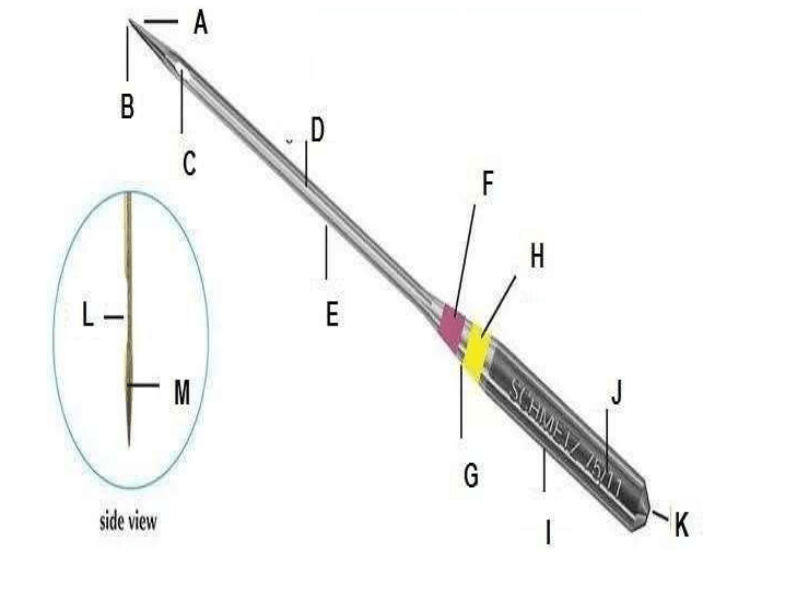
1. The component labeled A is known as _______________
a) Point
- b) Tip
- c) Eye
- d) Groove
2. The component labeled B is known as
- a) Point
- b) Tip
- c) Eye
- d) Groove
3. The component labeled C is known as
- a) Point
- b) Tip
- c) Eye
- d) Groove
- The component labeled D is known as
- a) Point
- b) Tip
- c) Eye
d) Groove
6. The component labeled E is known as
- a) Blade
- b) Needle size
- c) Shoulder
- d) Needle type
7. The component labeled F is known as
- a) Blade
- b) Needle size
– c) Shoulder
d) Needle type
8. The component labeled G is known as
- a) Blade
- b) Needle size
- c) Shoulder
- d) Needle type
9. The component labeled H is known as
__ a)
Blade
- b) Needle size
- c) Shoulder
- d) Needle type
- The component labeled I is known as __
- a) Shank
– b) Size
c) Butt
- d) Scarf
10. The component labeled J is known as __
- a) Shank
- b) Size
- c) Butt
- d) Scarf
11. The component labeled K is known as
- a) Shank
- b) Size
- c) Butt
d) Scarf
12. The component labeled L is known as __
– a) Shank
- b) Size
- c) Butt
- d) Scarf
13. What is the primary focus of the project on specialized
sewing needles?
A) Exploring different types of fabric
B) Analyzing sewing machine compatibility
C) Understanding various needle sizes
D) Enhancing precision and professionalism in sewing
14. Which needles are specifically highlighted in the
project?
A) Tapestry, Quilting, and Serger needles
B) Microtex, Beading, and Embroidery needles
C) Universal, Ballpoint, and Denim needles
D) Twin, Leather, and Metallic needles
- What is the purpose of the labeled diagrams included in
the project?
A) Identifying sewing machine brands
B) Explaining the parts of each needle type
C) Demonstrating fabric types
D) Highlighting stitching techniques - Which section of the project discusses the specific uses
of Tapestry, Microtex, and Beading needles?
A) Section E: Various Sizes of the Needle with Each
Application
B) Section F: Most Appropriate Needle for Various
Machines and the Reasons
C) Section G: Identification and Physical Observation
of These Needles
D) Section H: Maintenance and Safety Precautions of
Each Needle - According to the project, what contributes to selecting
the right needle size?
A) The color of the fabric
B) The texture of the thread
C) The type of sewing machine
D) The fabric and thread type
- Which needle is most appropriate for a Lock Stitch
Sewing Machine?
A) Tapestry Needle
B) Microtex Needle
C) Beading Needle
D) Universal Needle - What is the main purpose of identifying and observing
needle characteristics in the project?
A) To test needle durability
B) To distinguish between needle types
C) To compare needle prices
D) To select the most expensive needle
- According to the project, how should damaged needles
be disposed of?
A) Throw them in the trash
B) Bury them in the garden
C) Recycle them at a sewing store
D) Place them in a sharps container - What is the overall goal of the project on specialized
sewing needles?
A) To discourage people from sewing
B) To sell sewing machines
C) To provide a comprehensive guide for sewing
enthusiasts
D) To learn about different types of thread - Which needle is suitable for precision sewing on fine or
tightly woven fabrics? A) Tapestry Needle
B) Microtex Needle
C) Beading Needle
D) Universal Needle
- What role does the scarf play in a sewing needle? A) It
holds the thread securely.
B) It helps in identifying the needle size.
C) It guides the needle through the fabric.
D) It allows the bobbin hook to catch the thread loop. - Where can you find practical guidance on observing
needles for identification purposes?
A) The section discussing the most appropriate needle
for various machines
B) The section focusing on maintenance and safety
precautions of each needle
C) The summary section summarizing the entire
project
D) The section detailing the labelled parts of each
needle - Why is it important to match the appropriate needle to
the corresponding sewing machine?
A) To increase the cost of sewing projects
B) To ensure smooth operation and high-quality
stitching
C) To confuse sewing enthusiasts
D) To make sewing more difficult
- Understanding the different types of needles and their
specific _ is essential for achieving precise and
professional results. - This project focuses on three types of specialized
needles: __, Microtex, and Beading needles. - Sewing machines are designed for specific types of
stitching, each requiring particular needles to function
_. - The 3 Thread Overlock Sewing Machine is typically used
to finish the edges of fabric to prevent _.
–
- The 4 Thread Overlock Sewing Machine adds an
additional thread for increased _ and flexibility
in seams. - The 5 Thread Overlock Sewing Machine combines an
overlock stitch and a chain stitch for a secure and
__ seam. - Microtex needles are ideal for the Lock Stitch Sewing
Machine, especially for sewing fine or tightly woven
fabrics due to their sharp, __ point. - The Interlocking Sewing Machine is used for complex
stitching patterns and __ stitches. - The Cover Stitch Sewing Machine creates
professionallooking hems and _ on knit fabrics. - The Double Needle Sewing Machine utilizes two
needles to create parallel rows of stitching, commonly
for hems and _ finishes. - The Chain Stitch Sewing Machine produces a flexible,
chain-like stitch, ideal for seams that need to _.
- The Domestic Embroidery Machine is designed for
creating intricate _ patterns on a variety of
fabrics. - The Shank is the upper part of the needle that is
inserted into the sewing machine and provides
_. - The Eye is the hole near the pointed end of the needle
through which the _ passes. - The Point of the needle is designed to suit specific
fabrics and stitching _. - The Groove is a channel on the front of the needle
running from the eye to the _. - The Scarf is an indentation above the eye on the back
side of the needle that allows the bobbin hook to catch
the thread _. - Tapestry needles have a large eye, a blunt point, and
are ideal for counted cross-stitch and _.
- Microtex needles have a very sharp and slender point,
designed to pierce through tightly woven fabrics
_. - Beading needles are long and thin with a small eye,
suitable for threading through small _. - The correct needle size minimizes the risk of damaging
delicate fabrics and ensures that the thread flows
_, resulting in professional-quality sewing and
embroidery. - To identify a Tapestry Needle, look for its thick shank,
medium to thick shaft, large eye, and __ point. - Microtex needles are identified by their thin shaft,
small eye, and very __ point. - Beading needles can be identified by their thin, flexible
shaft and __ eye. - Proper maintenance of needles includes regular
cleaning, appropriate storage, frequent inspection, and
safe __.

